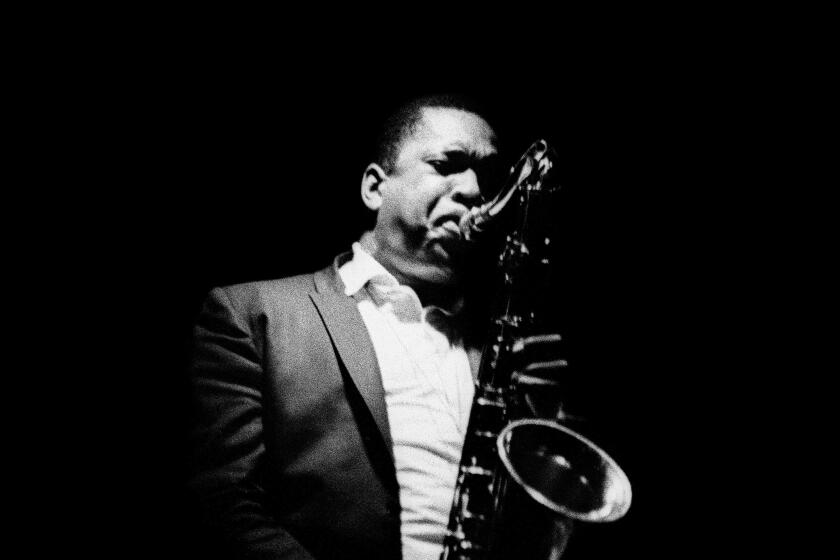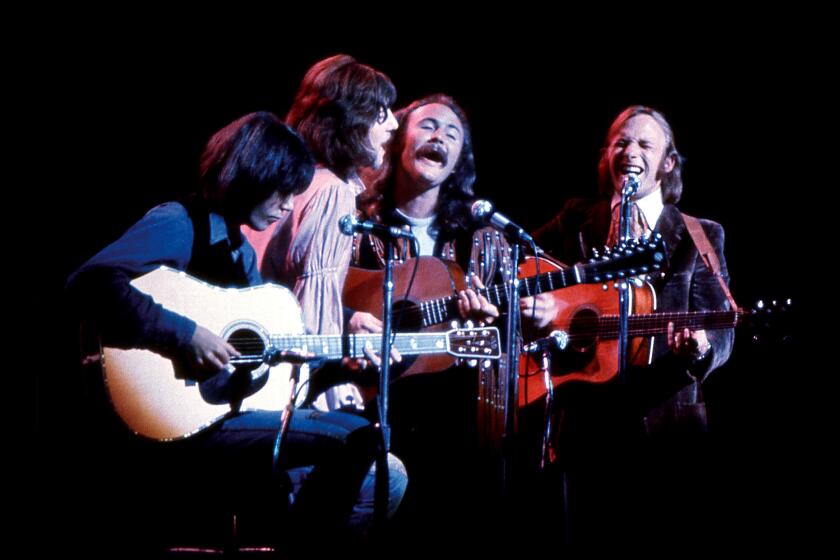MUSIC REVIEW : Cellist Starker: A Memorable Musical Visit
- Share via
SAN DIEGO — The unspoken rules that govern our choices of musical superstars are riddled with discrimination. In the world of opera, only tenors and sopranos are potential candidates--altos and baritones need not apply.
If Luciano Pavarotti, for example, had been born a baritone, he probably would have been just another overweight singer in a provincial opera house.
In this arena, cellists suffer a similar fate with their baritone cousins. The Sterns, the Perlmans, and the other fancy fiddlers hog the limelight, but cellists are expected to thrive on the esteem of their professional colleagues. The late Pablo Casals may have been an exception to the rule, but he was more musical saint than superstar.
In terms of virtuosity combined with interpretive insight, Janos Starker inhabits the most exclusive musical echelon, although the chances of seeing the 64-year-old Hungarian-American cellist on a late-night talk show are nil. His Friday night performance with the San Diego Symphony, however, proved to be a memorable musical visit.
His concept of Saint-Saens’ rhapsodic, single-movement First Cello Concerto was so complete, so integral, it is safe to say there was not a note out of place. Combined with his warm, generous timbre throughout the cello’s compass and an uncannily precise sense of intonation, Starker had a monopoly on the musical virtues.
He dominated the concerto to the extent that guest conductor Yoav Talmi worked almost obsequiously in Starker’s shadow, muting the orchestra’s accompaniment. In the Faure Elegy for Cello and Orchestra, Talmi and company were actually slightly behind the soloist’s subtly nuanced beat.
Talmi opened the concert with Schumann’s Third Symphony (“Rhenish”), a work for which the Israeli conductor has expressed great admiration. Although the majesty of the opening movement was full of promise, Talmi idled his way through the rest of the symphony, robbing it of both its emotional breadth and its solemn splendor. In the fourth movement, a tentative trombone section let the orchestra down at the most crucial point.
For those local observers who were quick to compare the local orchestra’s newly staffed brass sections with those of the Chicago Symphony--on the basis of one concert--it should have been a chastening moment.
In Ravel’s “La Valse,” Talmi came close to redeeming his reputation as a formidable podium presence. He was clearly on top of this razzle-dazzle showpiece, and the players returned his enthusiasm with alacrity. Though it could have been just a cheap closing fireworks display, Talmi caught the edge of parody Ravel infused into his apotheosis of the Viennese waltz.
More to Read
The biggest entertainment stories
Get our big stories about Hollywood, film, television, music, arts, culture and more right in your inbox as soon as they publish.
You may occasionally receive promotional content from the Los Angeles Times.










